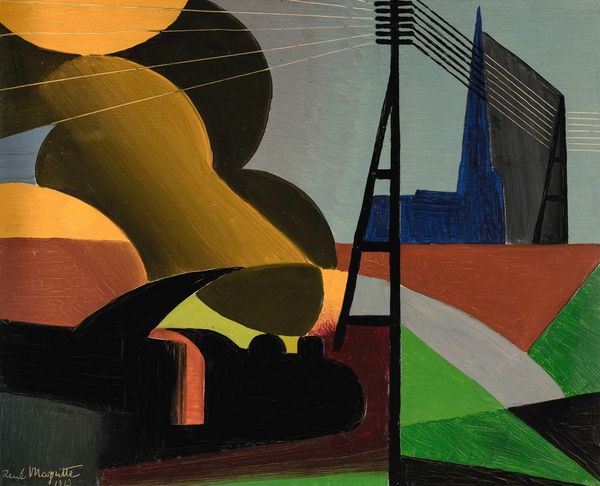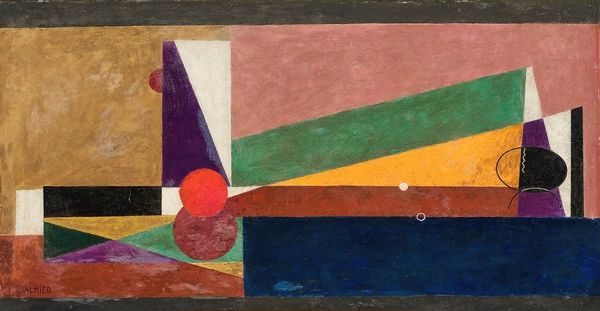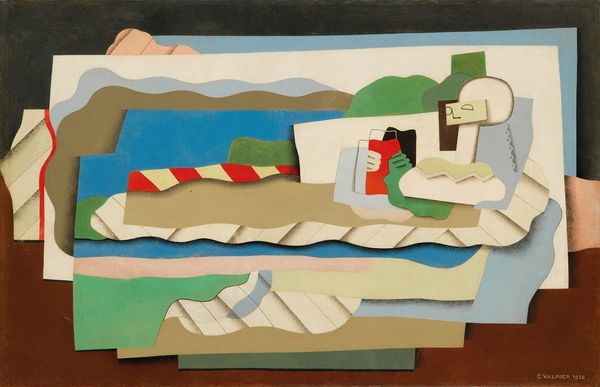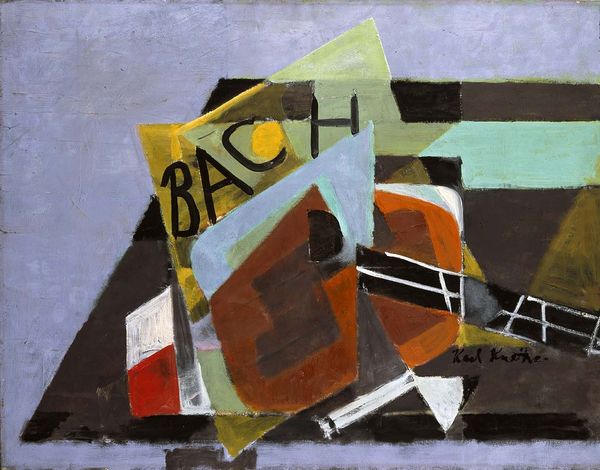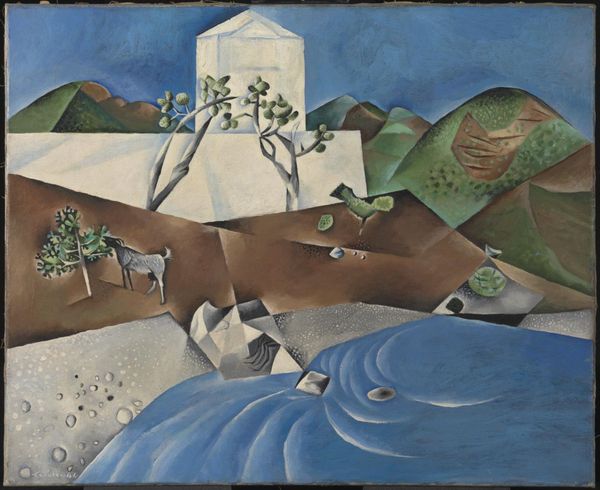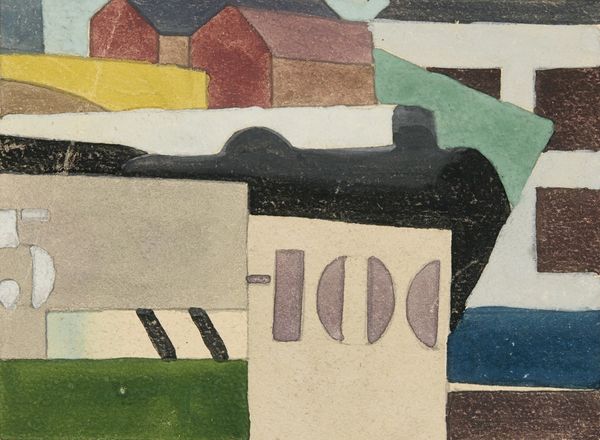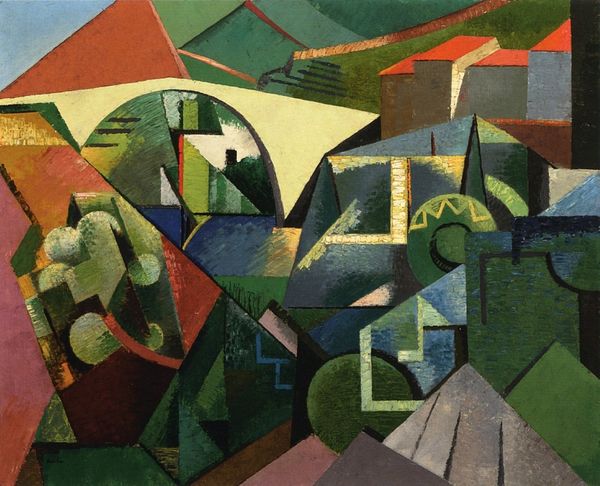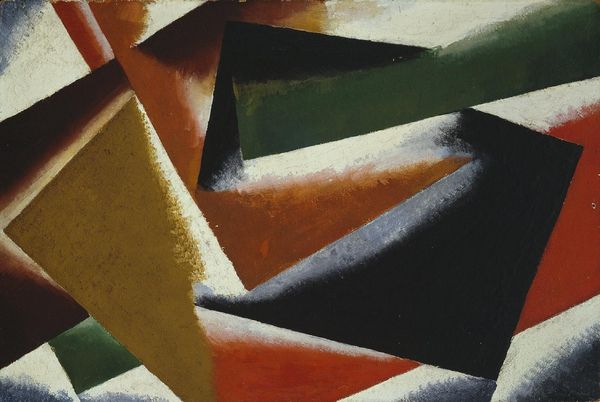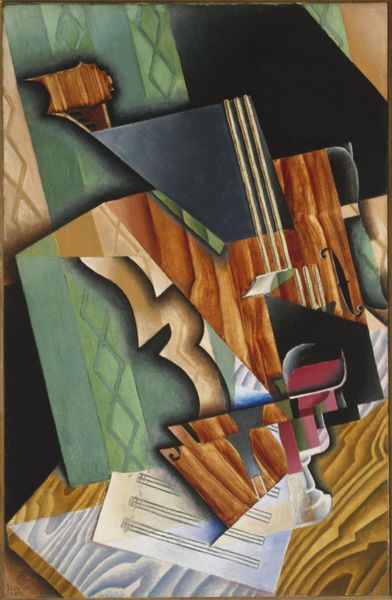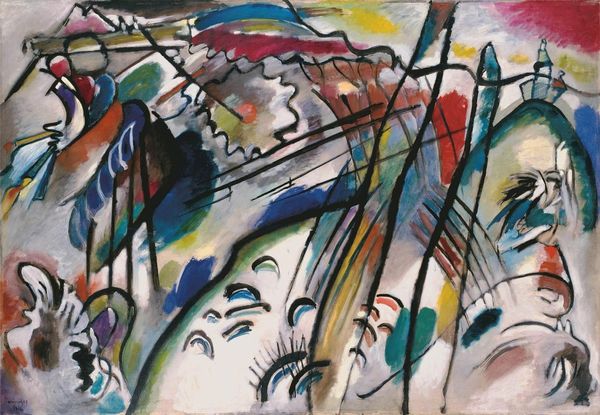
oil-paint
#
cubism
#
oil-paint
#
oil painting
#
geometric
#
modernism
Dimensions: overall: 88.9 × 200.66 cm (35 × 79 in.)
Copyright: National Gallery of Art: CC0 1.0
Editor: Here we have Roger de La Fresnaye's "The Watering Can (Emblems: The Garden)" from 1913, executed in oil paint. It's certainly a very structured composition. I'm immediately drawn to the interplay between geometric forms. What elements stand out to you? Curator: The painting exemplifies a movement toward representing the object-world via geometric construction, a strategy characteristic of early Cubism. Note, for example, how La Fresnaye reduces the watering can itself into essential cylindrical and triangular shapes. What is the impact of this reduction on the depiction's verisimilitude? Editor: Well, it certainly makes the subject less realistic. Almost abstract, even, though the recognizable garden implements keep it grounded. It almost feels like an inventory of forms as much as anything. Curator: Precisely. This analytical approach extends to the spatial organization. Consider how the planes of color intersect and overlap. Does this contribute to or detract from the depth of field, in your estimation? Editor: I think it makes the depth ambiguous. Everything feels flattened, brought to the surface. Even with the suggestion of objects receding, the geometry takes precedence. It really pulls the eye around the canvas. Curator: Yes, La Fresnaye is less interested in mimetic representation and more invested in exploring the inherent pictorial qualities of the canvas. He draws attention to the constructed nature of seeing. What have you gained through this formal analysis? Editor: I appreciate now that what seemed like simple shapes and colours are actually very deliberately arranged to make you consider how we perceive reality, not just passively accept what we see.
Comments
No comments
Be the first to comment and join the conversation on the ultimate creative platform.
